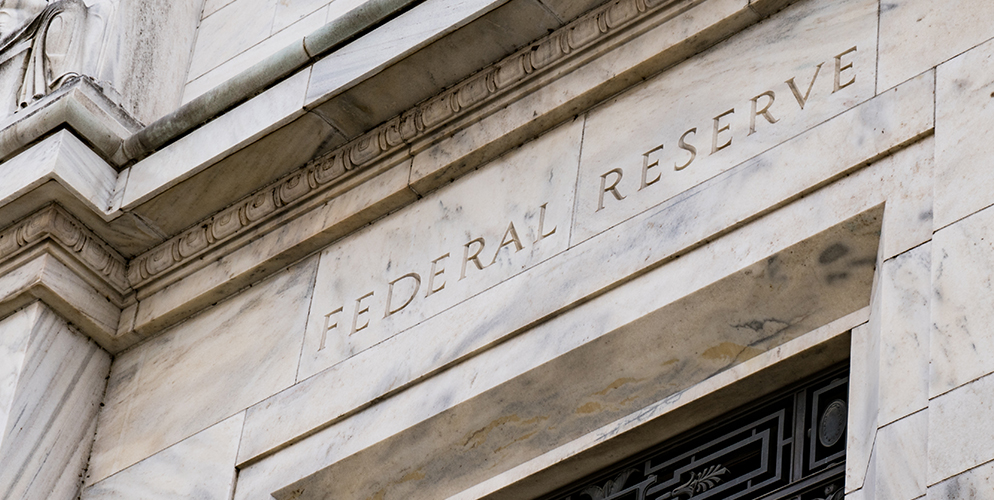In 1994, Adam West published “Back to the Batcave”, a behind-the-scenes look into that iconic, yet admittedly campy, cult television classic Batman from the late 1960s for which he starred in the title role. The show ran for three seasons, producing 120 episodes that creatively showcased, arguably, some of the most unique, dark, and conflicted character villains portrayed against a humorous and satirical backdrop. Decades later, TV’s Batman remains as part of today’s pop culture with references to the tongue-and-cheek, and often corny, dialogue still being made as we find ourselves taken “Back to the Batcave.” It did not take long for 2024 to bring the Fed to the center of attention as the Central Bank nears its first policy meeting of the new year on January 30/31. Before the start to the traditional “blackout period” over the past weekend, the usual cast of Fed-speak officials offered up their views on a range of topics including the state of the economy, prospects for easing, and evolving geopolitical developments. Since the beginning of January, we have received mixed data points on inflation as well as continued evidence of overall economic resiliency. Although contracts pricing is reflecting a de minimis probability of a rate cut at this month’s FOMC, there is now about a 40% probability of a 25-basis point reduction in the benchmark Fed funds rate in March, down from about 75% at the beginning of January.
So, as we go Back to the Fed Cave, we do so with the understanding that the data trajectory will guide future Fed movements, and we will make the assumption that Chair Powell and team will remain above the political theatre during this presidential election cycle, yet we cannot help but wonder if the Fed can successfully avoid any criticism over the coming months. Since the September FOMC meeting, the number and timing of rate cuts have shifted to a more dovish bias, yet the futures contracts seem to be getting ahead of Central Bank messaging. As of this writing, there is approximately 132-basis points of easing priced into 2024, yet we question whether there will be sufficient economic softening to warrant such anticipated rate cuts, even though expectations are down from a recently targeted 150-basis point reduction. We are of the opinion that the magnitude of Fed rate reductions this year will likely be more aligned with the Central Bank’s own forecasts calling for three 25-basis point cuts in 2024 pursuant to December’s Summary of Economic projections, as opposed to current market thinking that almost doubles this forecast, and unless the economic data suggests otherwise, we see the pivot starting closer to the summer.

Although bond market volatility should ease throughout 2024, we can expect there to be pronounced idiosyncratic behavior as monetary policy pivots later this year. When the Fed does initiate the easing sequence, the objective would be to re-engage economic growth without reigniting inflation, and if the recession narrative is held at bay, we can look for further collapse in the Treasury yield curve inversion. Admittedly, the economic underpinnings continue to surprise to the upside, particularly with resounding strength in the U.S. labor market as evidenced by December’s above-consensus rise in nonfarm payrolls as well as in wage advances, in addition to an unexpected drop in initial claims for unemployment insurance benefits during the most recently reported period. Bond yields found themselves moving higher throughout the first three weeks of January, albeit with a few detours, with the release of December’s payrolls and attendant pullback on strong odds of a March rate cut. We must be mindful that any combination of geopolitical events, including our very own presidential election, could arrest much of the disinflationary progress and cause growth to underperform our expectations. Bond yields were prompted higher following a higher-than-anticipated print on December retail sales, again questioning the velocity and depth of interest rate cuts. Last month’s retail sales booked the strongest pace in three months, culminating in a solid holiday shopping season that puts consumer resiliency squarely on display. It is our view that just an expanding narrative of rate cuts, coupled with moderate easing, could realistically keep 2024 growth above zero, likely within the 1.5% - 2% range with support from continued labor market resiliency backdropped by 4%-ish unemployment, while better lending and origination conditions in the housing sector may prove elusive. Last week, bond yields were also under upward pressure as comments made by Fed Governor Christopher Waller cast wide challenge to the market’s visibly dovish forecast. Given the length of time between the January and March FOMC meetings with prospects for divergent data prints, we suspect that Chair Powell’s upcoming press conference will be conspicuously void of any specific guidance for a March rate cut. We feel comfortable making this assertion given what we expect to be positive, albeit diminishing, growth performance throughout much of the year with the inflationary pace moderating slowly down to 2%.
We are still looking forward to strong muni demand conditions once the monetary policy and supply dust settles and investors figure out their curve preferences ahead of what is expected to be a retreat in the “higher-for-longer” mantra.
The municipal bond market seems to be responding to a monetary policy backdrop destined for an eventual pivot to an easing bias, but not without some pains of anticipation. While muni performance ended 2023 in the green thanks to a late-year directional shift in yield bias, generic fixed-income cohorts are starting the new year in the red as the velocity and depth of an expected easing cycle are being walked-back by the futures market. Munis are also being pressured by building primary supply, but perhaps such pressure, which has displaced any perceived notion of a conventional “January Effect”, is not the worst thing to occur given the swift and sharp run-up in muni valuations that has made any attempt of even a fly-by correction seem justified. We are still looking forward to strong muni demand conditions once the monetary policy and supply dust settles and investors figure out their curve preferences ahead of what is expected to be a retreat in the “higher-for-longer” mantra. Given the performance challenges of the opening weeks of 2024, munis are still comfortably outperforming UST month-to-date, as the tax-exempt asset class continues to find residual strength from the late Q4 rally that produced historic price advances and overall outperformance for 2023. However, we do point out that this performance gap has narrowed in recent days, and may continue to shrink if muni technicals further pressure tax-exempt performance. Interestingly, January’s stalled commencement to the new year did not keep muni mutual fund flows from entering positive territory, but we do point out that other institutional investors have yet to step in with conviction, and we suspect that current ratios account for part of the push-back. Once primary activity normalizes, with broader professional support, secondary market conditions can fall in line with spreads adjusting accordingly and more positive flow activity taking hold. In the meanwhile, it is advisable to pay attention to entry points as a way to lock in value and cash flow, and we see duration extensions as a 2024 strategy as steepening curve conditions persist.
Despite the fixed-income losses being booked for January, we remain confident that a performance sea change is nearing given the widely held expectations for an easing bias, coupled with the unique muni market technicals that often promote favorable returns for the asset class. Looking at January performance to date, we see that 1 to 7-year tenors are materially outperforming the broader muni index, albeit still negative, with the longest maturities underperforming, given tempered expectations for an early and sharp policy shift to an easing posture, leaving higher-for-longer potentially back in play for now. Should convictions for rate cuts return to firmer ground, we can expect to see stronger returns across the long-end of the curve, as positive fund flows normalize. Revenue bonds outperformed G.O.s in 2023 (6.89% vs. 5.62%) as investors focused on essential purpose activities and enterprises that distance themselves from the vagaries of the municipal budgetary process, and as credit stability continued to take hold across various revenue bond sectors, which helped to support longer duration strategies after these sectors were among the poorest performers.

Jeff Lipton
Title:Managing Director, Head of Municipal Credit and Market Strategy
85 Broad Street
26th Floor
New York, New York 10004

